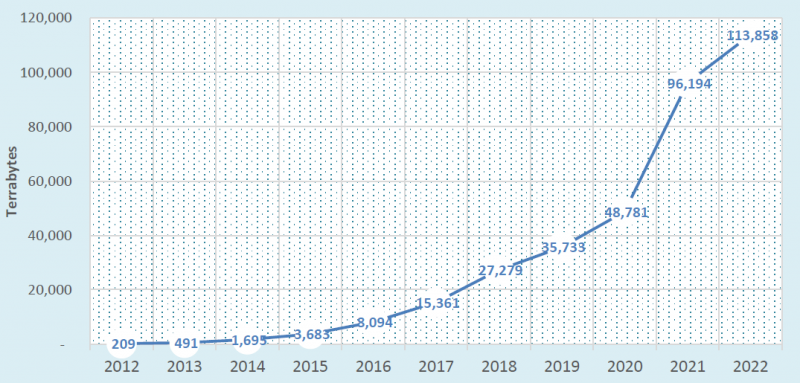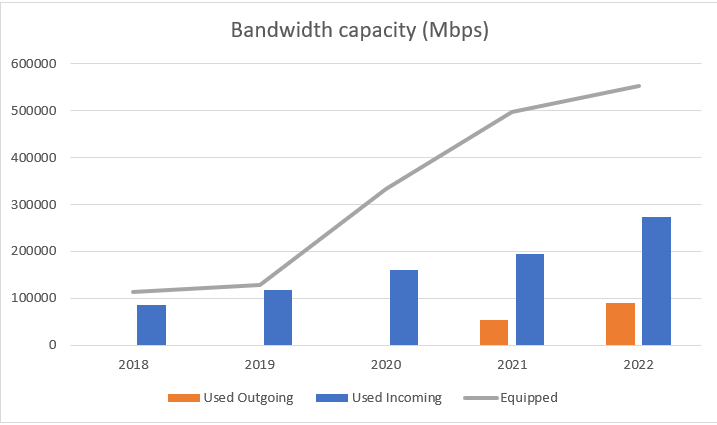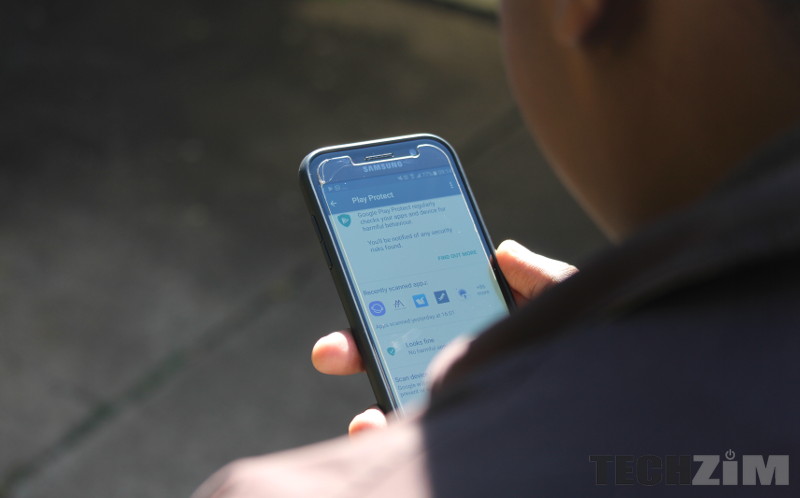I remember a quote that said, “If you’re not using at least 50GB of data per month, you’re not really using the internet.” That feels truer by the day.
Whatever you need to do now consumes a lot of data for work or play. You cannot do without that Zoom call anymore and YouTube feels like a university library now, you can’t not use it.
All the information presented here is taken from the Postal and Regulatory Authority’s (Potraz’s) reports on the ICT sector, except where specified.
Data consumption
This is reflected by the growth in data consumption in Zimbabwe. Here is what the last decade of mobile internet usage looks like:

There was a huge bump in 2021 when the pandemic hit and we all had to work, learn and play remotely.
We consumed 113,858 Terabytes of data via our mobile phones in 2022. That’s close to 7GB per person that year, or just over 500MB per month per person.
In terms of what we actually do on the internet, it is encouraging to see that Zimbabweans are uploading more and more content by the year. We are no longer just passive consumers.
Bandwidth capacity
Here is how used incoming (us consuming other people’s content) and outgoing (others consuming our content) bandwidth capacities have grown over the last 5 years. This is for all internet usage, not just mobile.

There are gaps in the data but we can see how Internet Access Providers have increased equipped bandwidth capacity by 388% since 2018.
The equipped capacity represents the data transfer rate, or in terms I understand, the pipes that we have to funnel data through. Our pipes in December 2022 allowed for transferring 553,700 Mbps. This capacity affects the speed which we eventually experience as end users.
Our consumption has been growing steadily too. Of note is the fact that going from 2021 to 2022, used outgoing increased by 65% whilst used incoming grew by 40%.
In 2021, outgoing was 28% of incoming but in 2022 it was 33%. Meaning we are increasingly uploading and sharing more content even as our own consumption grows.
This increased usage must be accompanied by increased capacity, lest we start experiencing slow speeds.
Internet Penetration
The internet penetration rate grew from 62.8% in 2021 to 65.3% in 2022. That means 65.3% of the population had internet access in 2022.
It’s not quite that simple though because people with multiple devices skew those results. The reality on the ground is most likely that much less than 65% of the population had internet access.
In fact, Datareportal reported that our internet penetration rate was 34.8% at the start of January 2023. Far less than the 65.3% that Potraz reports we had in December 2022.
The correct figure is probably somewhere in the middle as even Datareportal acknowledges that their figure most likely underrepresents reality.
Devices
The latest Zimstat ICT Access by Households and Individuals report revealed that over 90% of internet usage in this country is via mobile data.
Only 2.6% of the population had access to fixed internet.
Indeed the Potraz report supports these figures. In December 2022, 98% of all active internet subscriptions were on mobile.
Mobile penetration rate, the number of mobile phones in the country compared to the population, increased to 94.2%.
In contrast, the mentioned Zimstat report showed that only 14.2% of the population had a computer in 2020.

What’s your take?